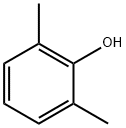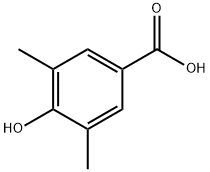Chemical Properties
colourless crystals or white powder. soluble in alcohol, ether, chloroform, benzene and alkali solution, slightly soluble in water.
Occurrence
Reported found in smoked fatty fish, boiled and cooked cured pork, rum, malt whiskey, Japanese whiskey,
coffee, katsuobushi (dried bonito) and lamb’s lettuce (Valerianella locusta).
Uses
Similar to other xylenol compounds, 2,6-dimethylphenol is used in the synthesis of anti-oxidant compounds due to the phenol moiety in the structure. In addition, this compound is used as a a reactant
in the synthesis of polyphenylene ether polymers.
Definition
ChEBI: 2,6-Dimethylphenol is a hydroxytoluene.
Application
2,6-dimethylphenol is generally applied in industry as a monomer in polymerization reaction. For the production of polyphenylene ether resins, polyester and polyether resins.
Aroma threshold values
Detection: 400 ppb
General Description
2,6-dimethylphenol is a colorless to off-white crystalline solid with a sweet tarry odor. Odor threshold concentration: 0.4 mg/L . (NTP, 1992)
Air & Water Reactions
Insoluble in water
Reactivity Profile
2,6-Dimethylphenol is incompatible with bases, acid chlorides, acid anhydrides, and oxidizing agents. Corrodes steel, brass, copper, and copper alloys.
Fire Hazard
2,6-Dimethylphenol is combustible.
Flammability and Explosibility
Non flammable
Purification Methods
Fractionally distil 2,6-xylenol under nitrogen, crystallise it from *benzene or hexane, and sublime it at 38o/10mm. [Beilstein 6 IV 3122.]
Toxics Screening Level
The initial threshold screening level (ITSL) for 2,6-dimethylphenol is being set at 2 μg/m3 with 24-hour averaging.







